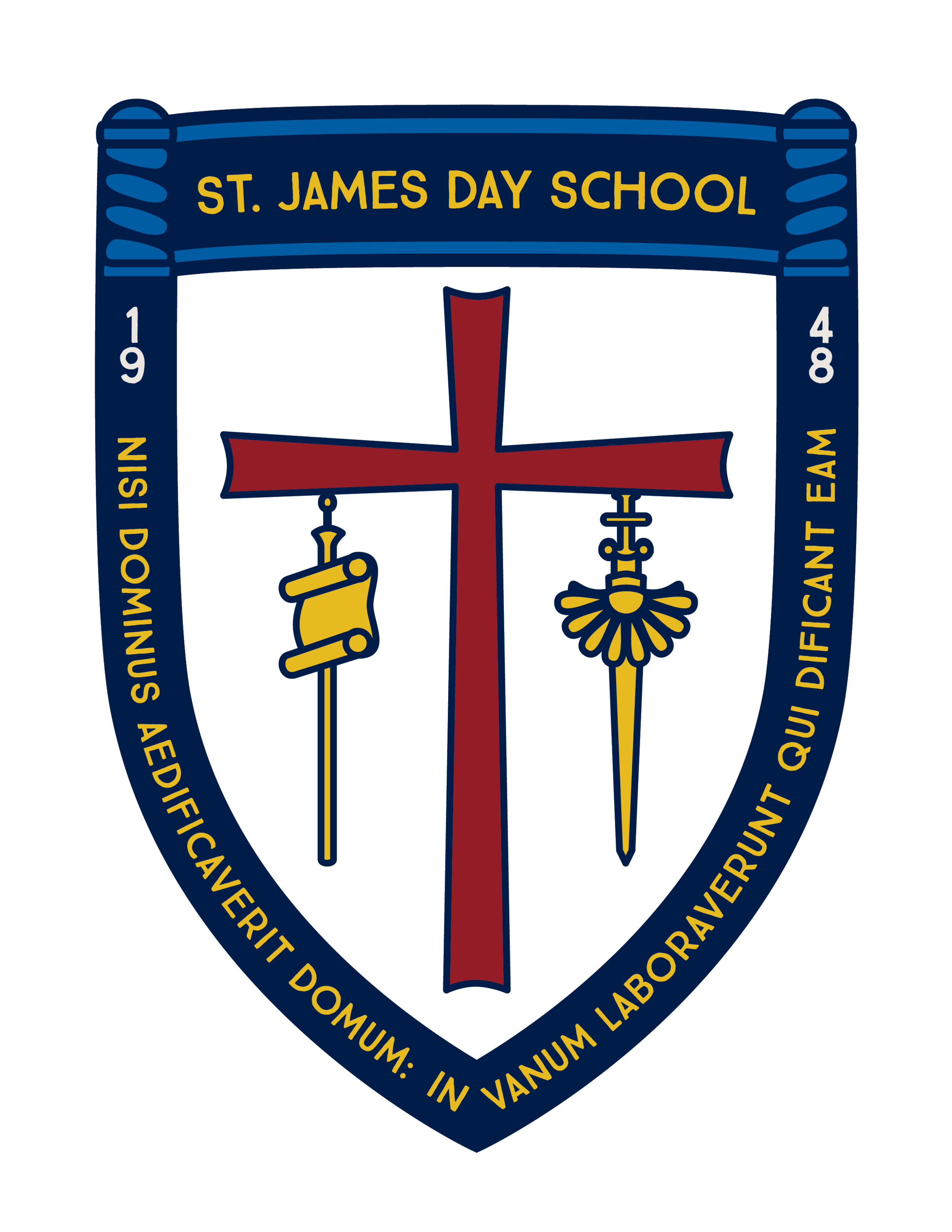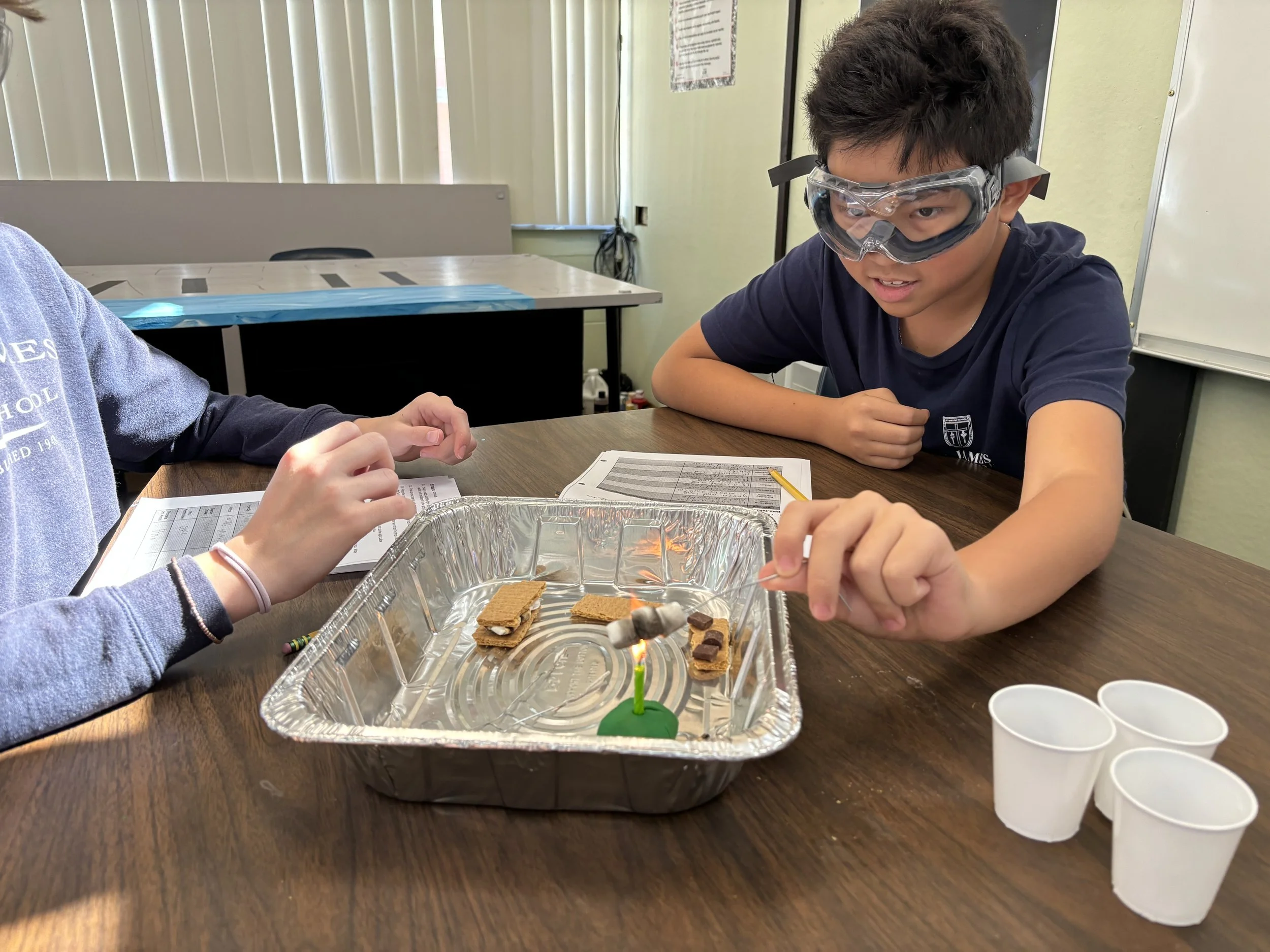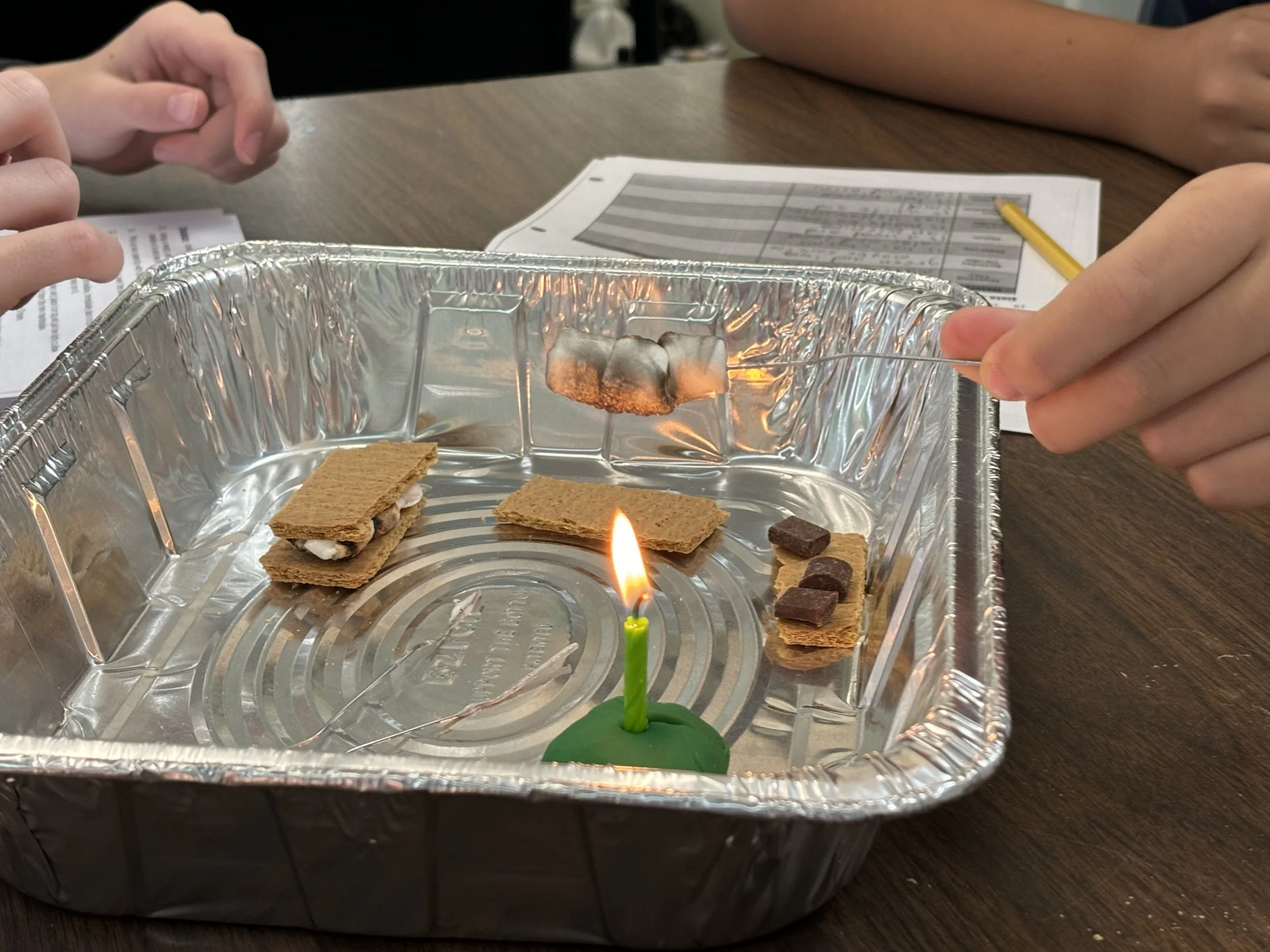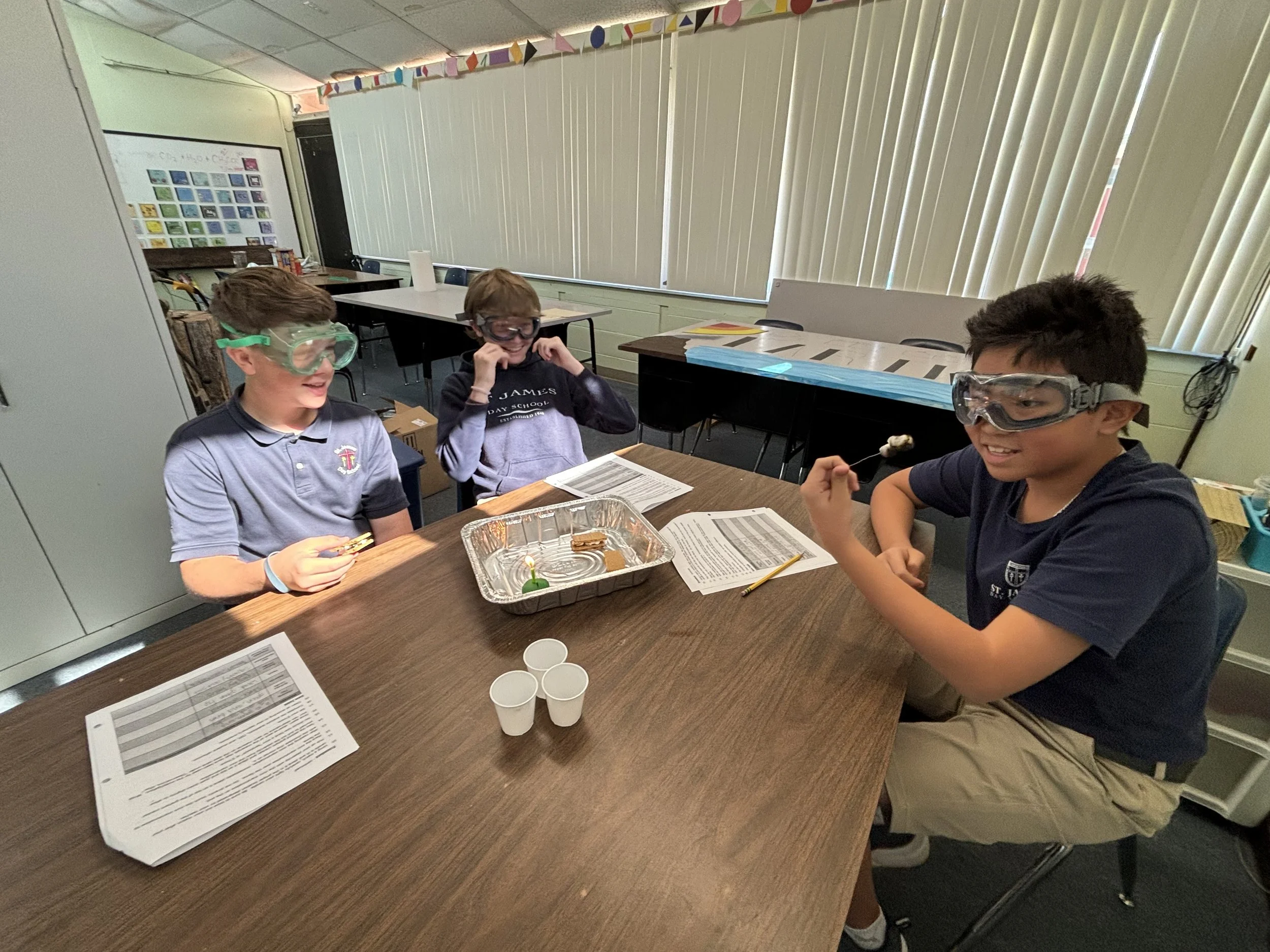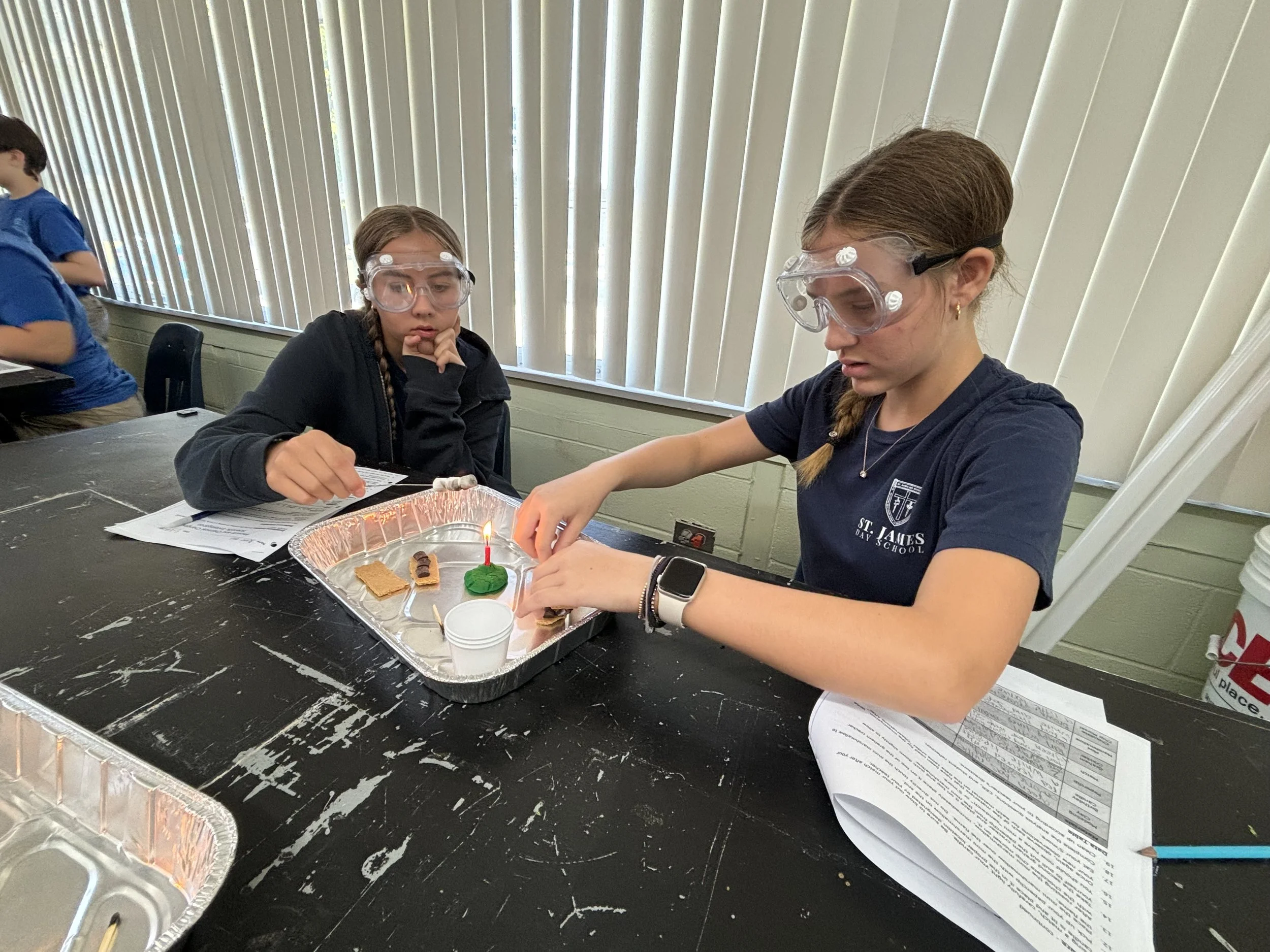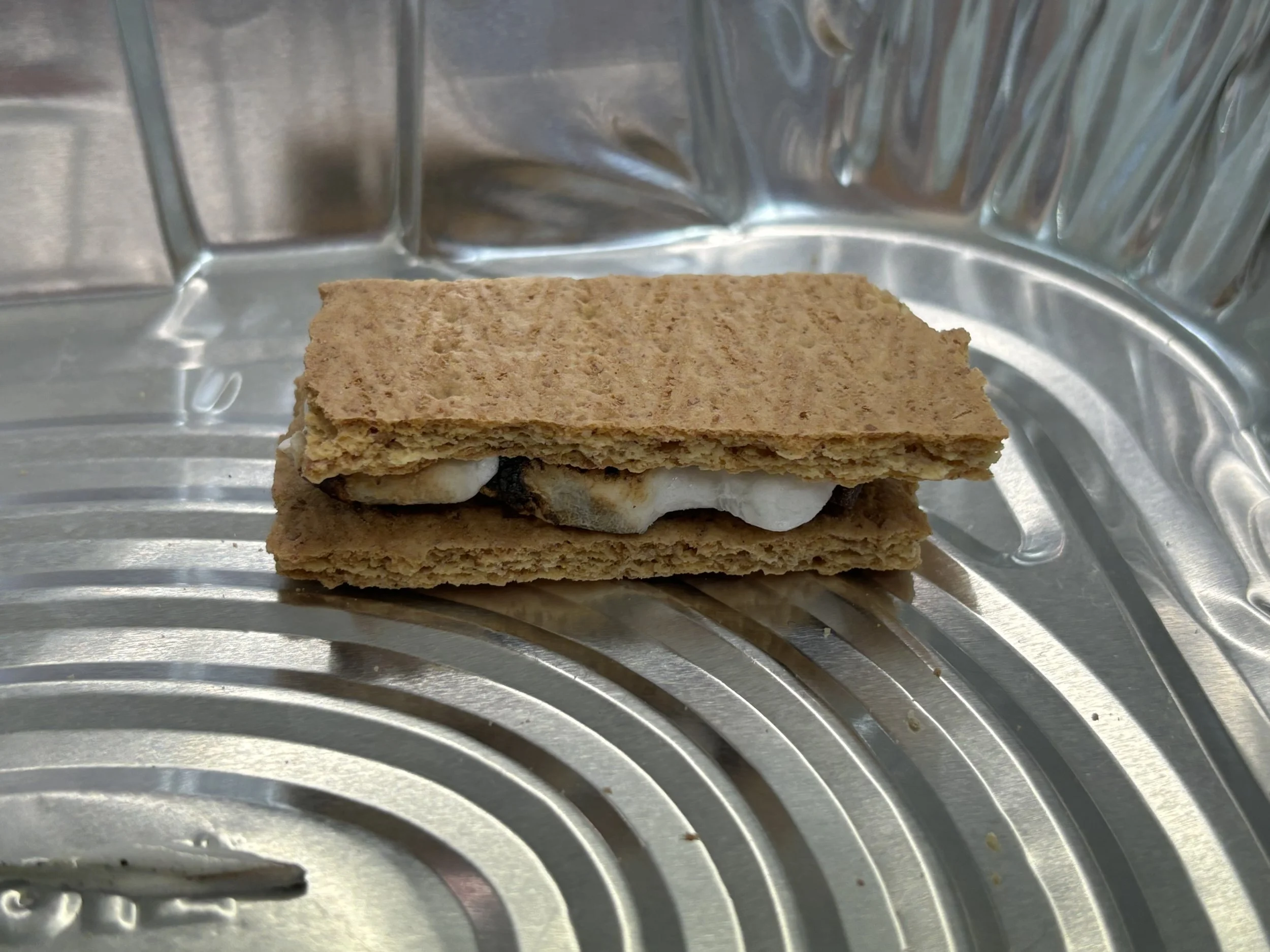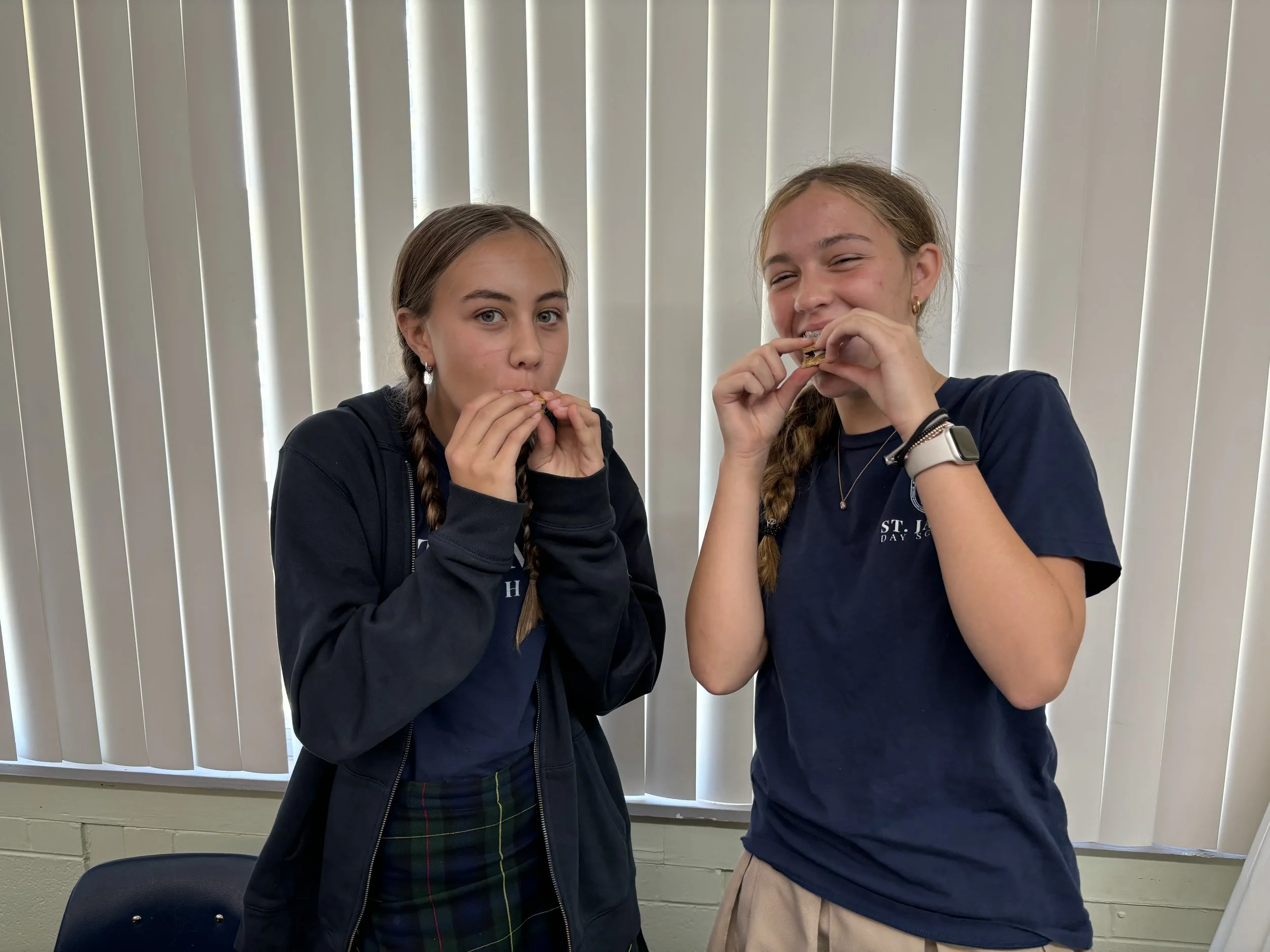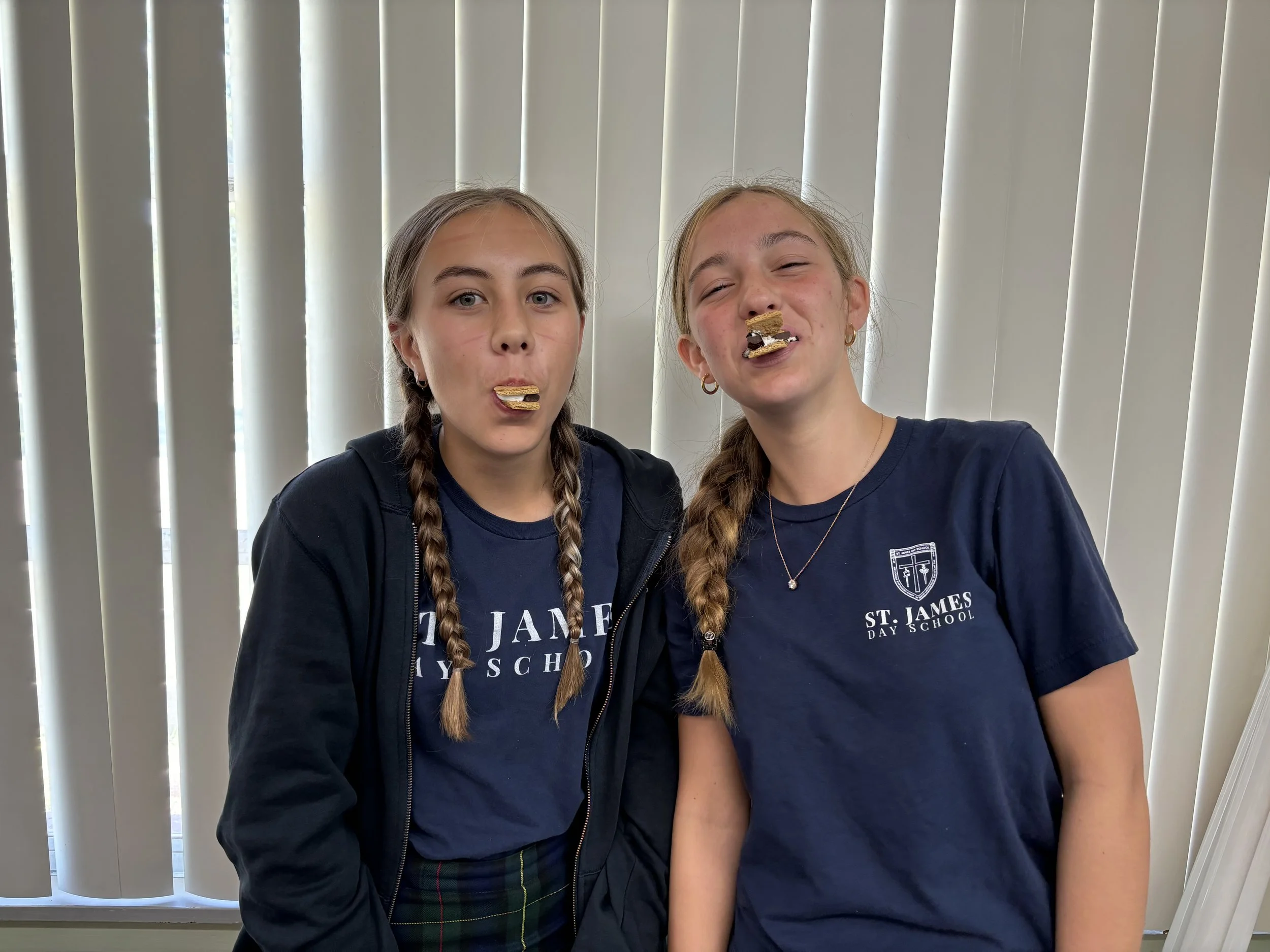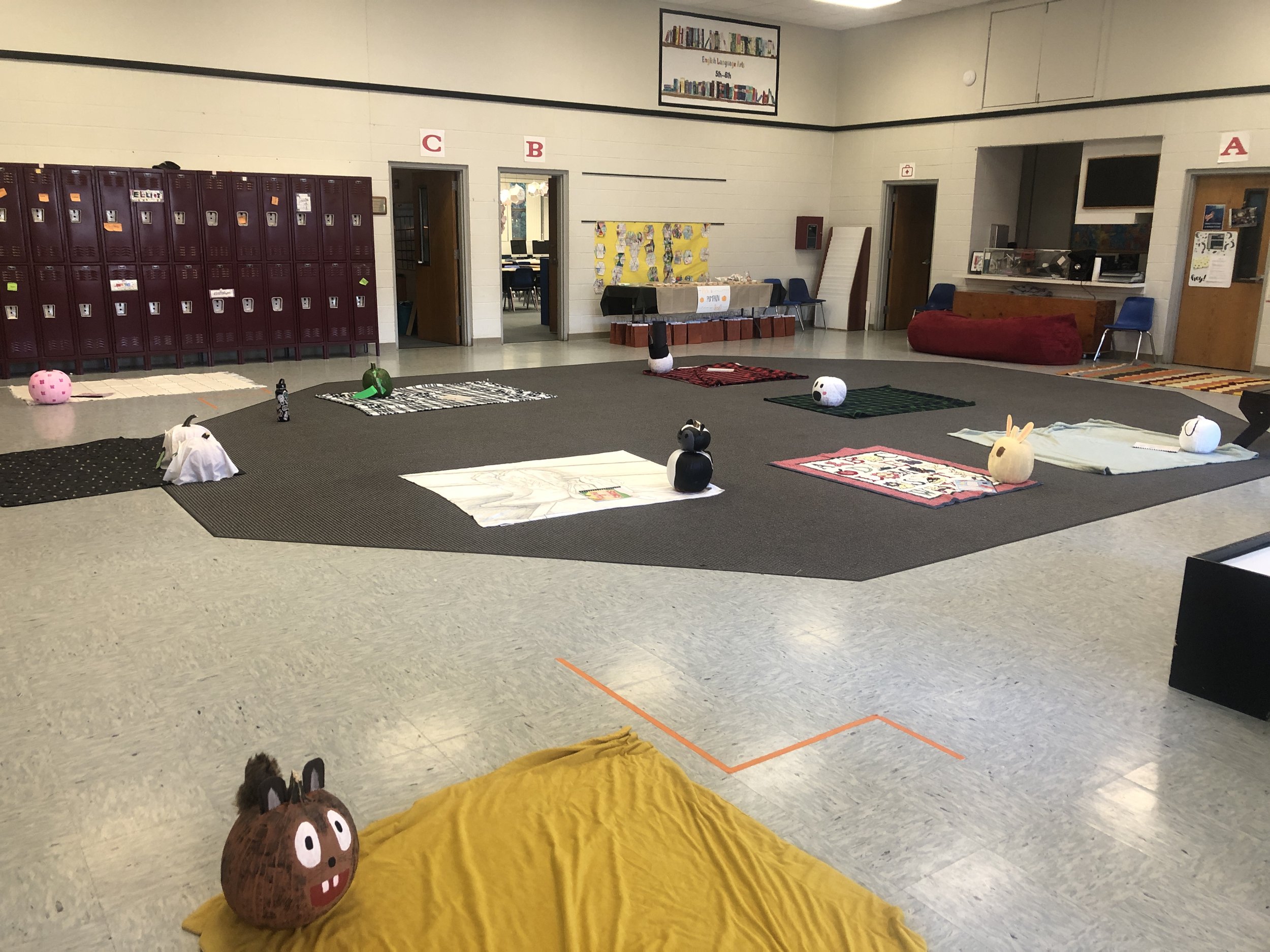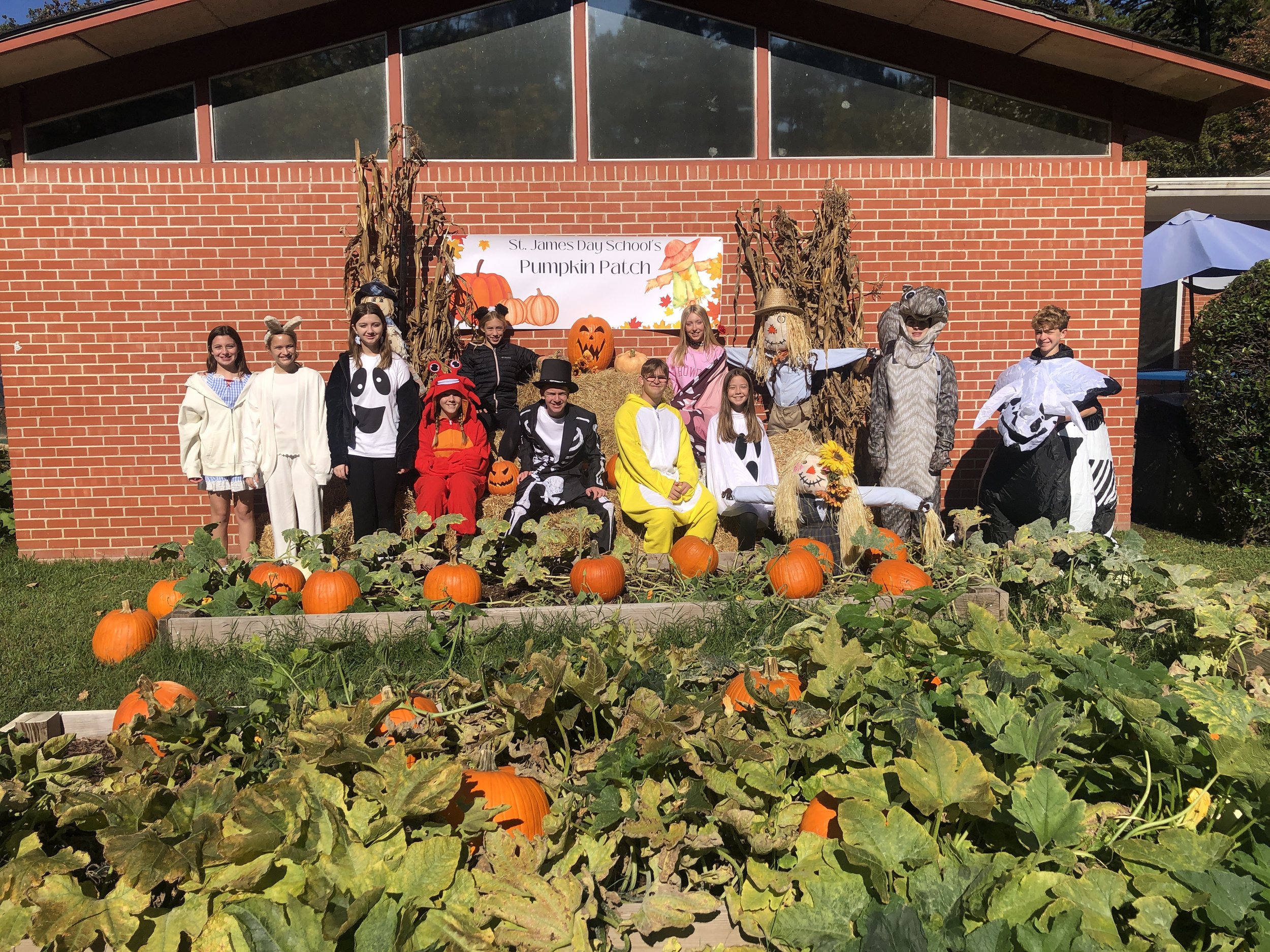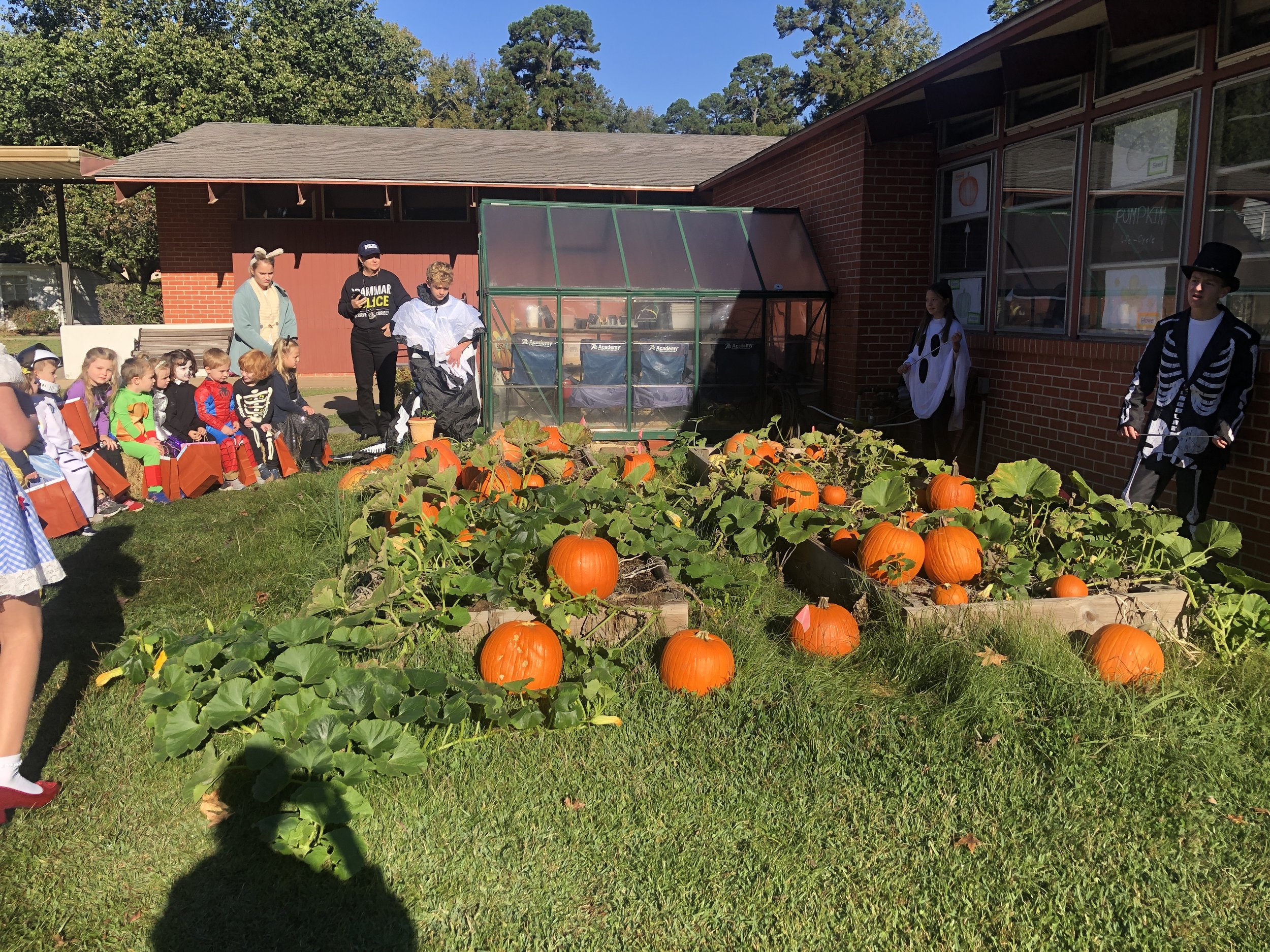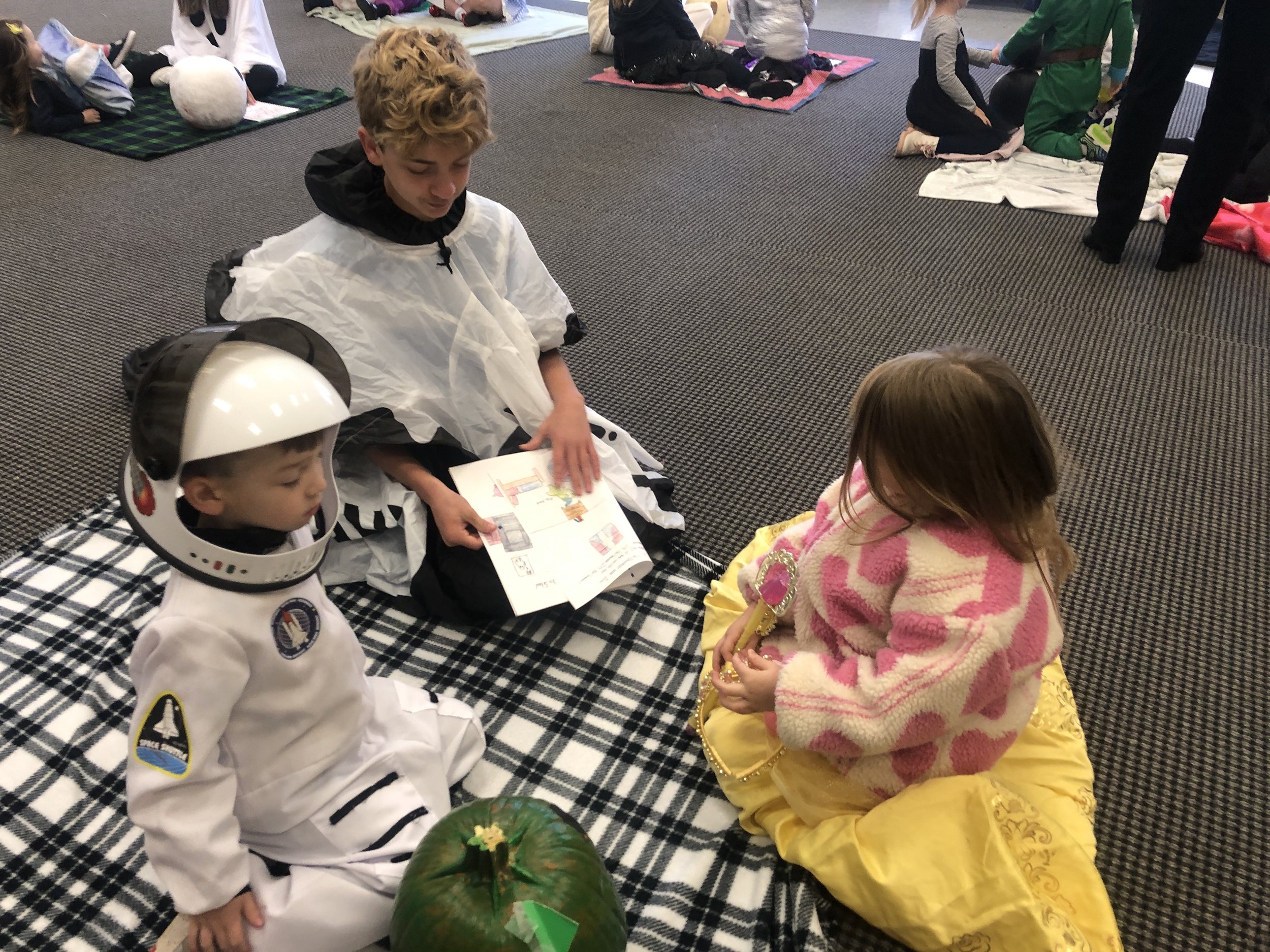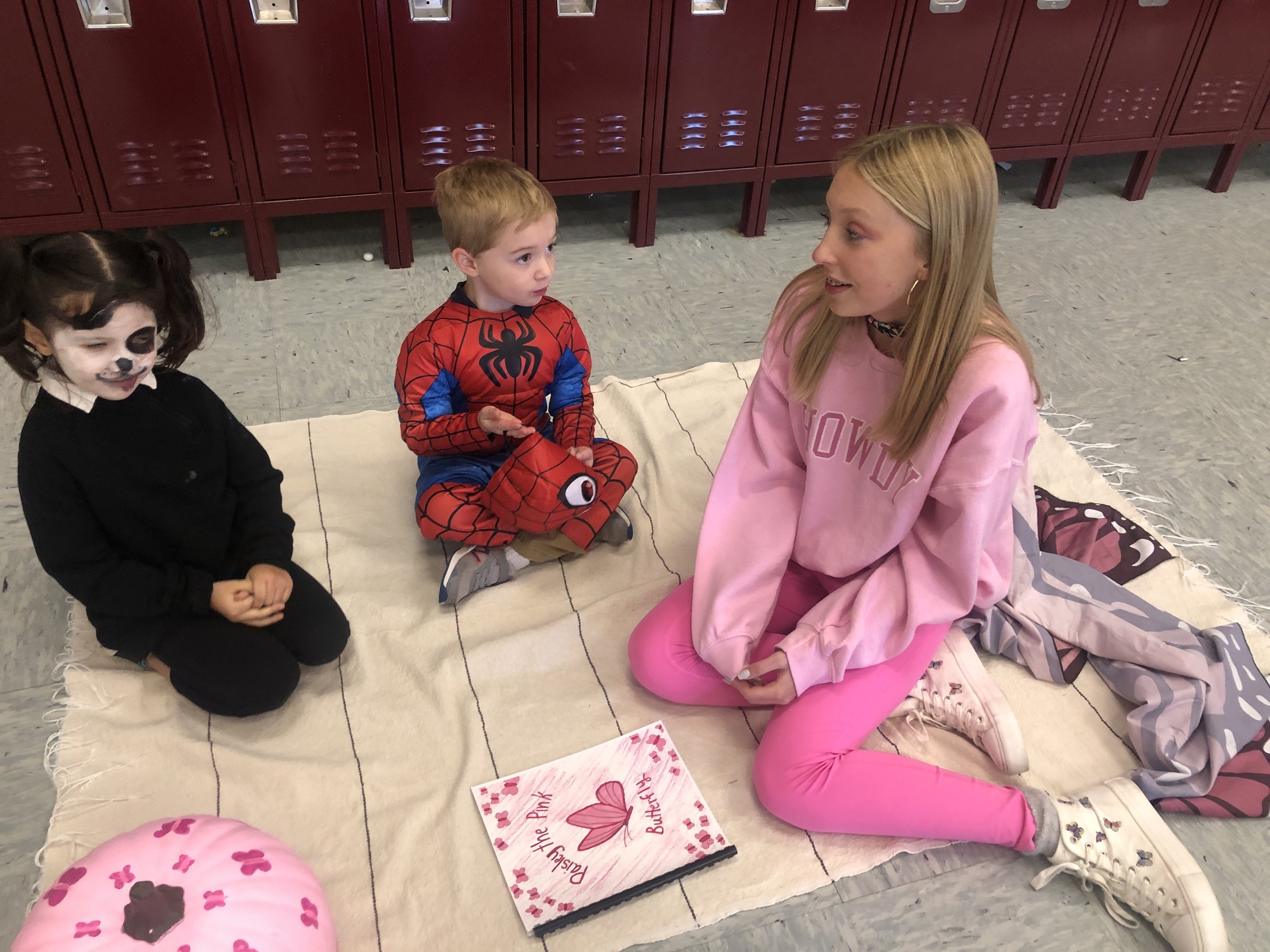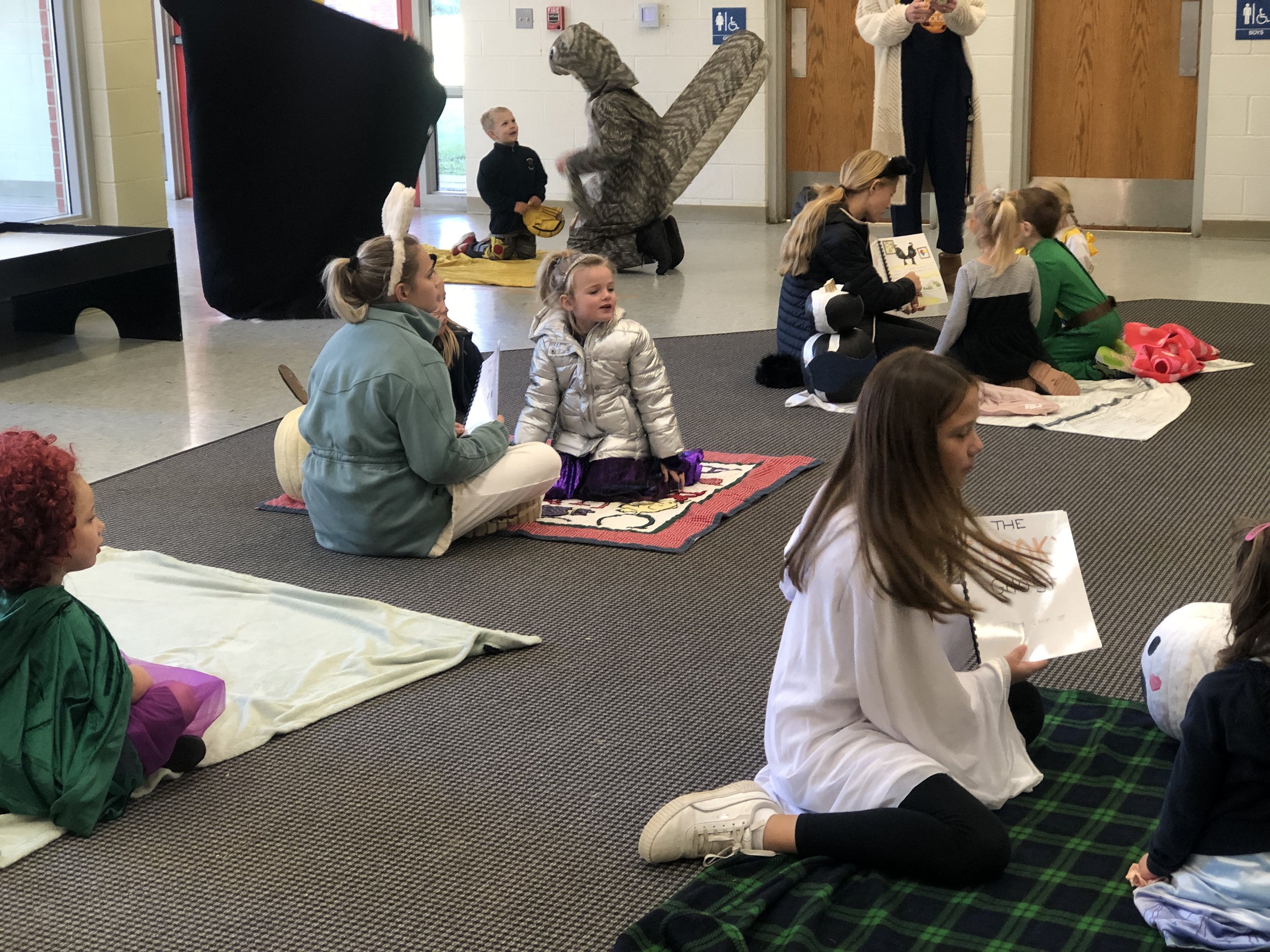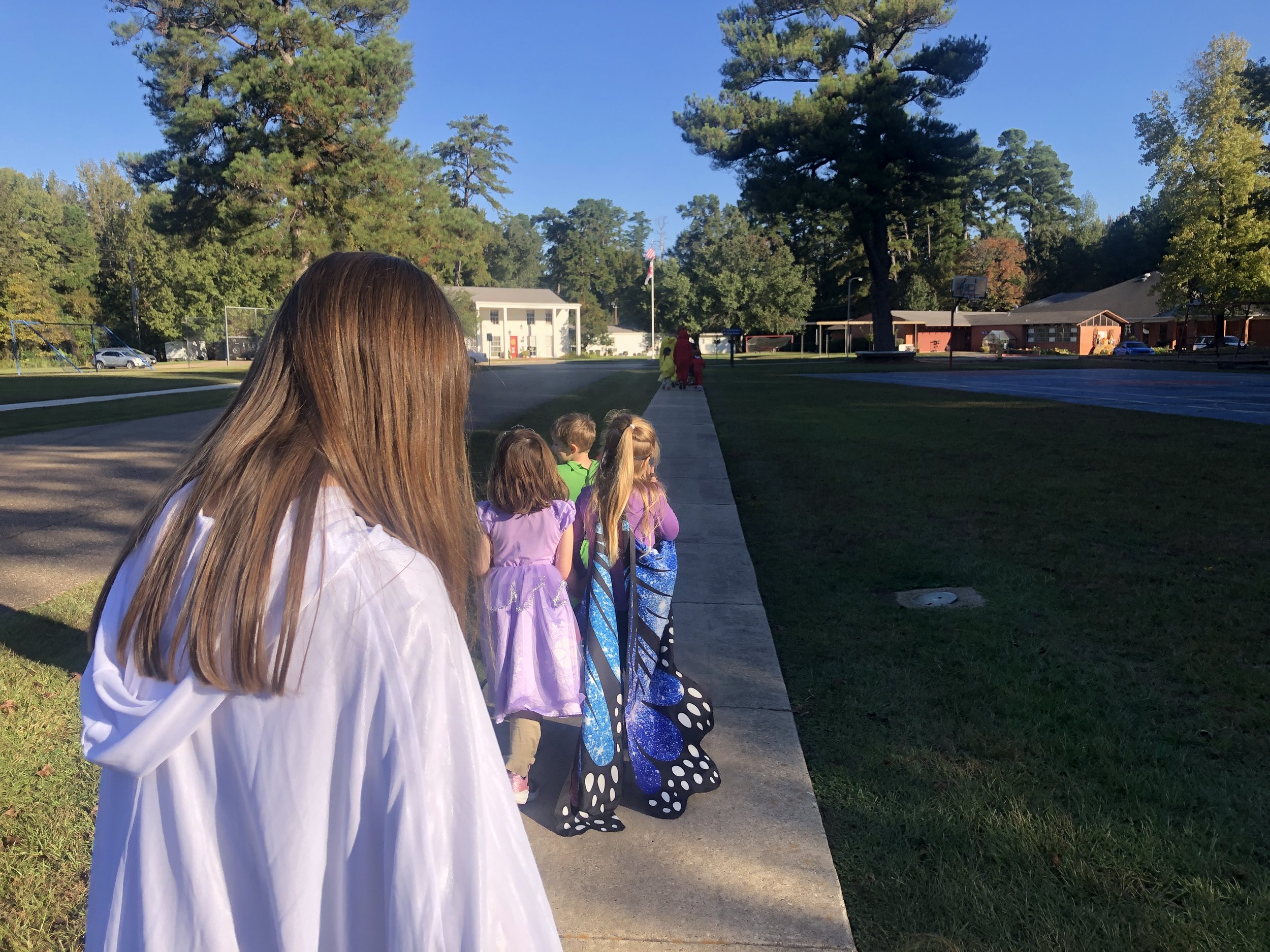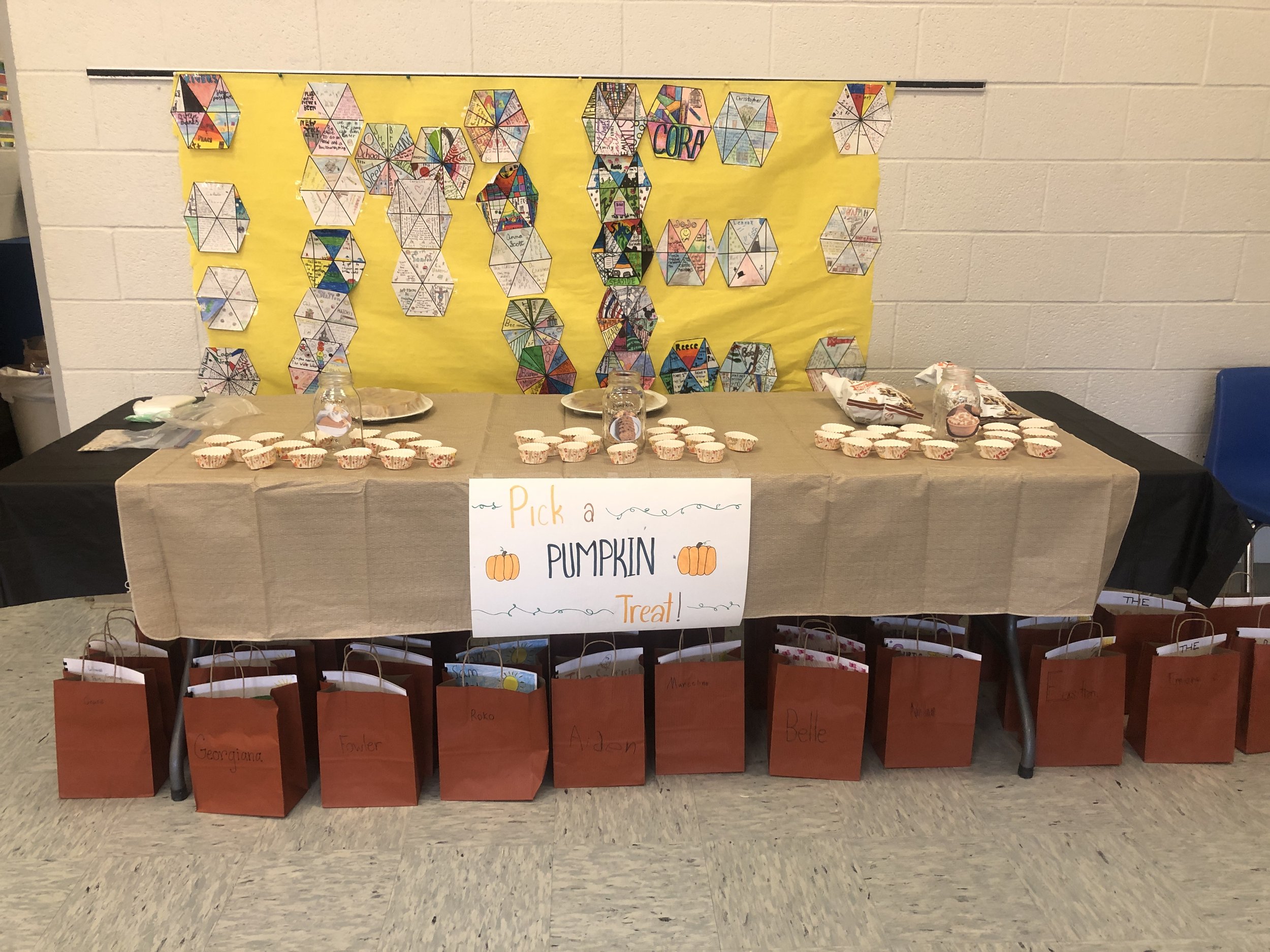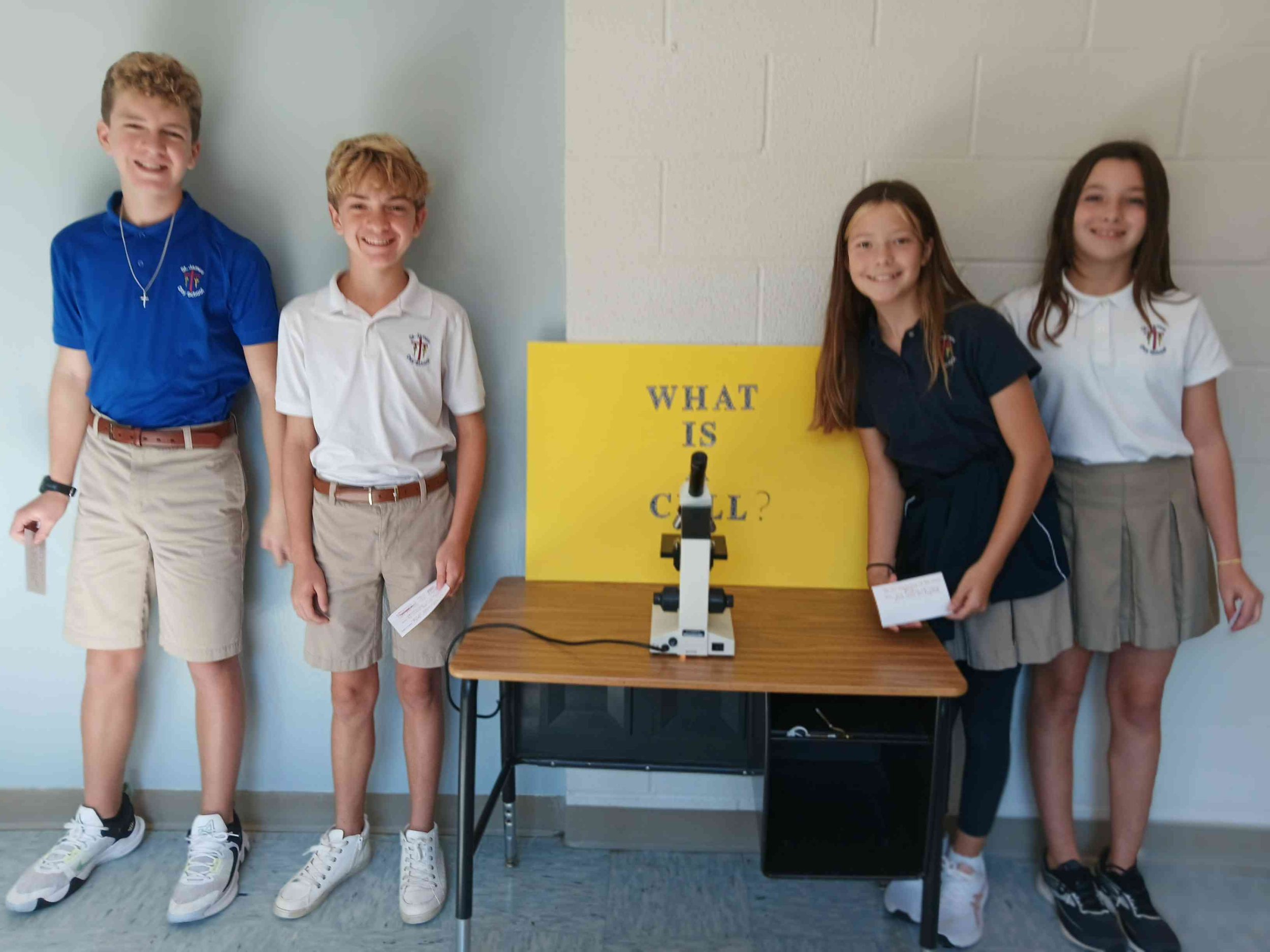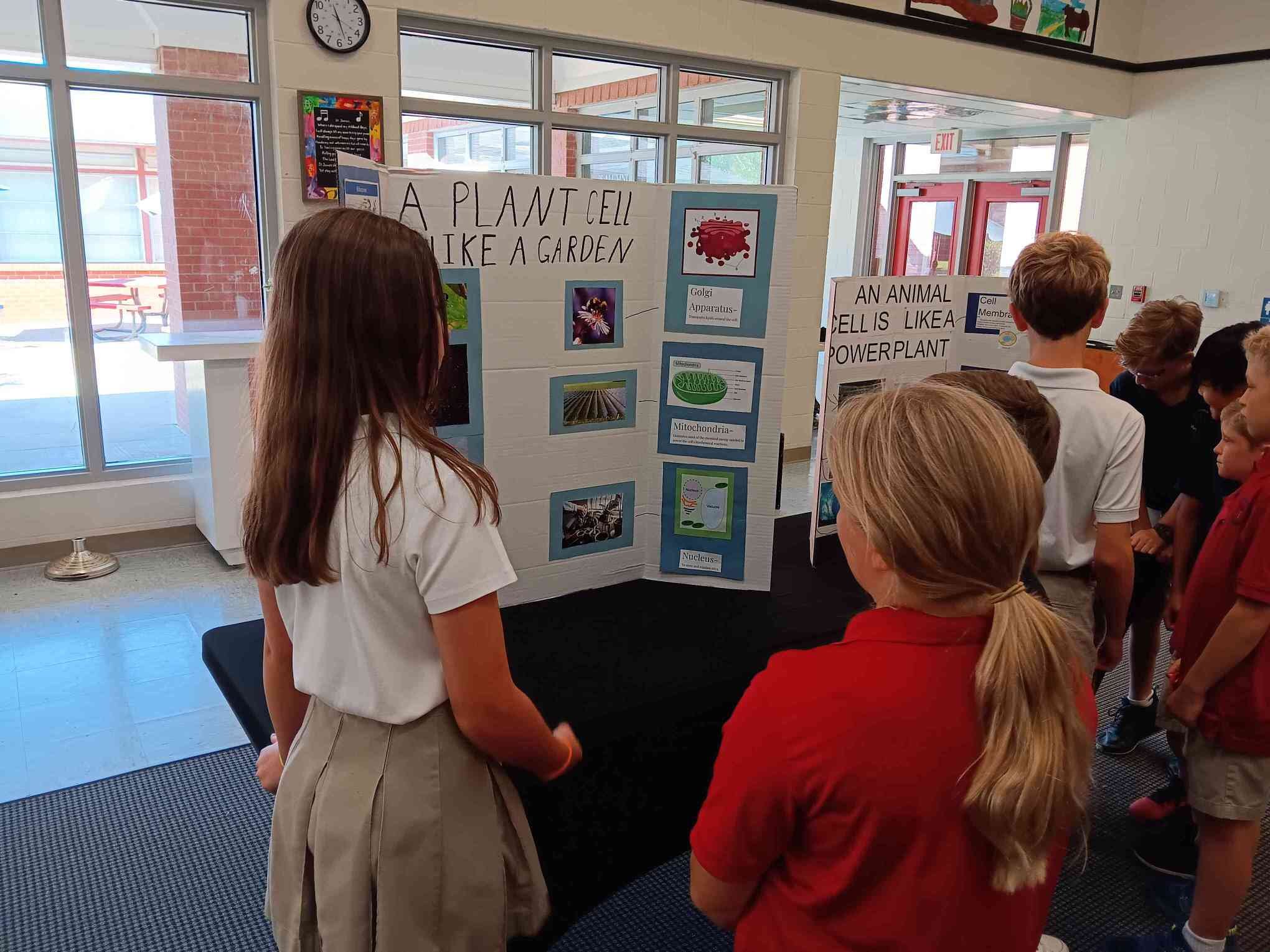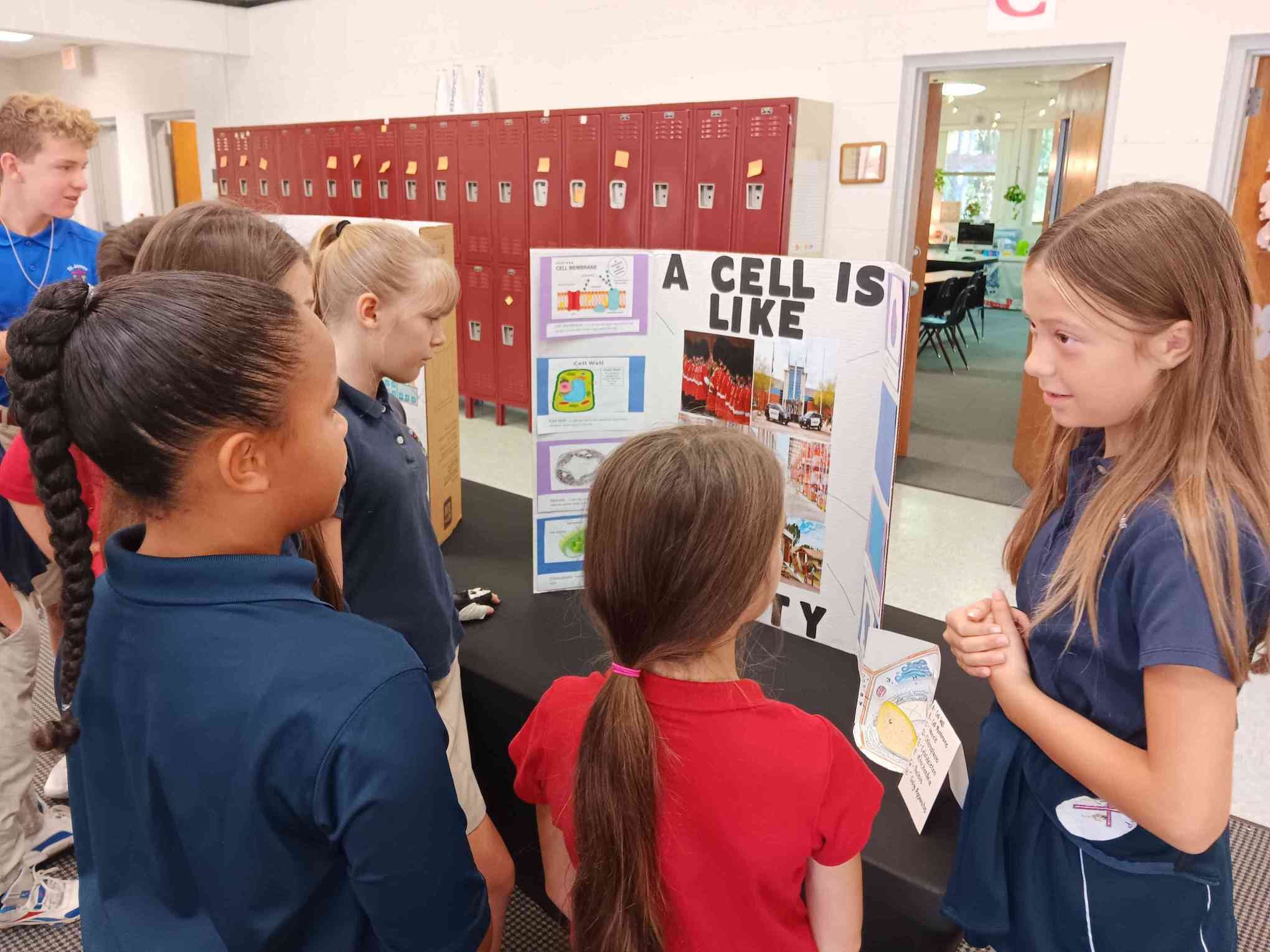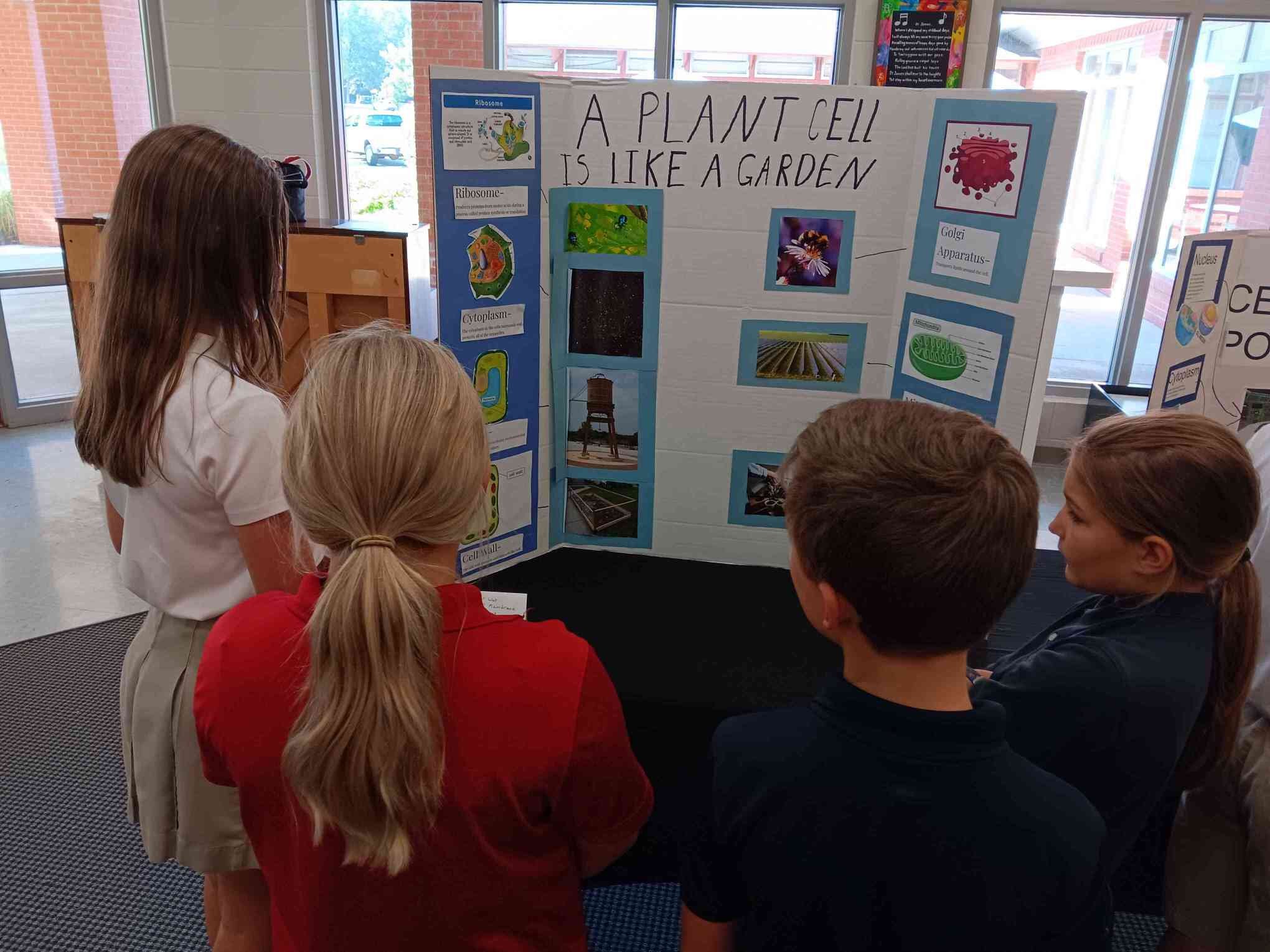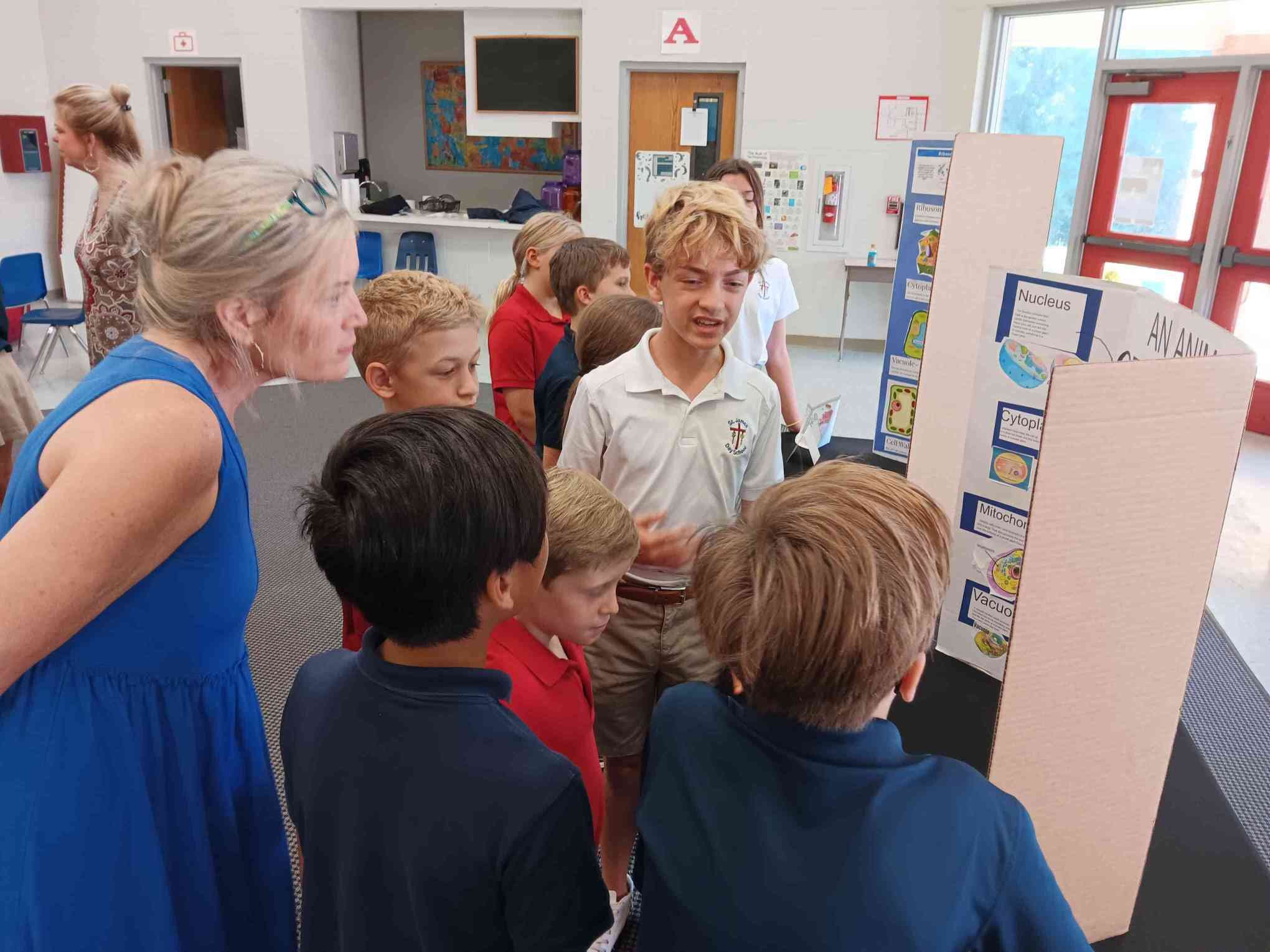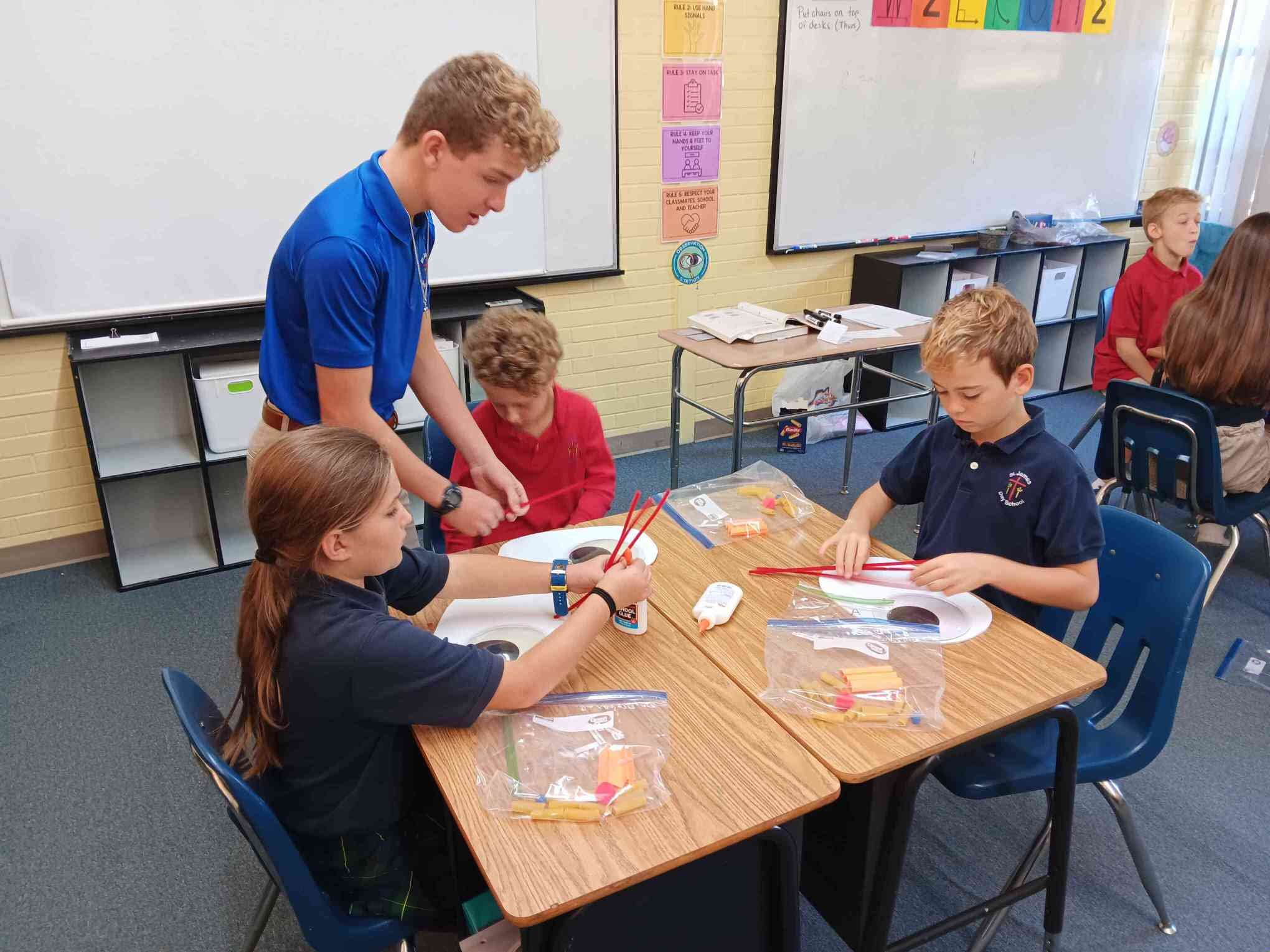…city, movie set, rodeo, basketball court, hospital, human body, car, library, nuclear power plant, fitness gym, concert, and even a prison! Who knew you could compare tiny cells to all of these things? The seventh graders were assigned either a plant or animal cell before brainstorming how the functions of the organelles were analogous to something of their choosing. Once the brainstorming phase was completed, they created poster boards to illustrate their analogies and presented them in front of their peers. What a fun way to learn the functions of a cell!
Our wonderful middle school students have done it again! The 5th, 6th, 7th, and 8th graders came together to pull off another successful pumpkin patch experience for our very own preschoolers. The event kicked off with the 7th and 8th grade students reading to them the stories they created, all the while dressed as one of the characters from their story. Then, they taught them all about the life cycle of pumpkins with a song and illustrations they had made. Next, our 5th and 6th graders hosted them for some fun carnival-style games in the open field next to the patch. Lastly, before hopping onto the trailer for a hayride, the preschoolers were able to pick their very own pumpkins from the patch to take with them. Our middle school students were involved with this project from start to finish. There was responsibility and teamwork that went into planting and caring for the pumpkins. Overall, their efforts made the event even more special for the preschoolers. Kudos to them all!


















Did you know?…
The first S’more recipe was published in 1927 - the snack was called “Some Mores”.
The largest S’more ever made weighed 267 pounds!
There is enough milk chocolate produced each year to make more than 750 million S’mores.
Our seventh grade students recently learned these fun facts and “S’more” with a lab they conducted during science class in conjunction with their unit over Physical and Chemical Changes. They were tasked with investigating, observing, and identifying whether physical and/or chemical changes occur during the process of making S’mores. This was a fun way to have them think about these changes that occur all around them every day, even with something as simple as setting up and making a yummy dessert. This was one lab they were happy to see all the way through to the end!
Our seventh and eighth graders hosted primary and pre-k students recently for our school’s annual Pumpkin Patch. Along with some of our traditional activities, such as storytime and teaching about the pumpkin life cycle, our seventh and eighth graders also put on a short skit for them. Another new activity included pre-k students test-tasting three different pumpkin desserts and then voting on their favorites! A fun time was had by all and we look forward to hosting the SJDS Pumpkin Patch for years to come!
In seventh grade science class, the students were challenged to develop an analogy for either a plant or animal cell that demonstrated their understanding of the various organelles within the cell. They created a display of their analogy using a poster and presented the information to the fourth grade class. Example analogies included…
“A plant cell is like a garden.”
“A plant cell is like a city.”
“An animal cell is like a power plant.”
“An animal cell is like a factory.”
To conclude, the students then directed the fourth grade on how to construct their own simple cell models using various materials. Our seventh graders did a fantastic job handling this task and showed such professionalism. Bravo, seventh grade!
